Zen Meditation Experience Surrounded by Nature in Izushi
Zen meditation, or zazen, has captivated many renowned figures, including Steve Jobs of Apple, Evan Williams, co-founder of Twitter, and filmmaker Michael Moore. What draws so many people, regardless of nationality, to zazen? Perhaps it’s the inherent simplicity and the concept of eliminating the unnecessary that resonates with them. Located close to Kinosaki Onsen, Sukyō-ji Temple in the castle town of Izushi offers an authentic Zen experience. Let’s explore the deep cultural heritage and spirit of Japan through zazen.
Authentic Zen Experience at Sukyō-ji Temple, Associated with Takuan Oshō
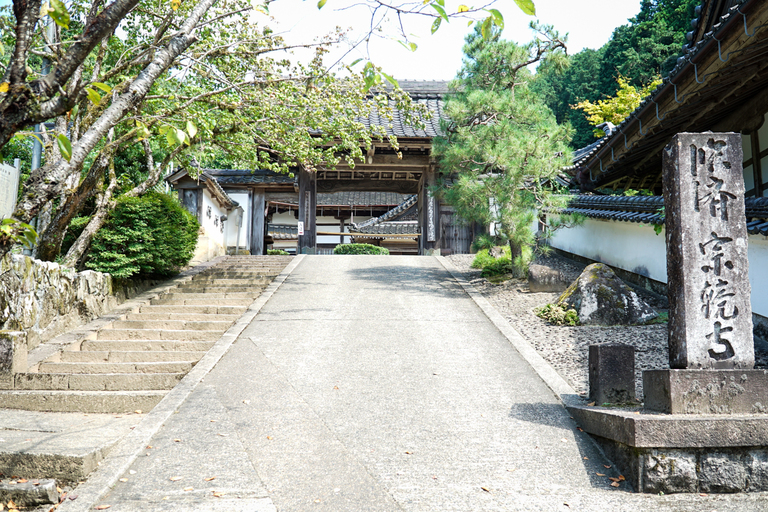
Sukyoji, affectionately known as 'Takuan-dera' by locals and tourists, is associated with 'takuan,' one of the most popular pickles in Japan. Takuan is made by washing and drying daikon radish, then soaking it in a mixture of rice bran and salt (the nuka bed) with a weight placed on top. The crunchy texture, the umami extracted from the daikon, and the subtle saltiness pair perfectly with the sweetness of white rice.
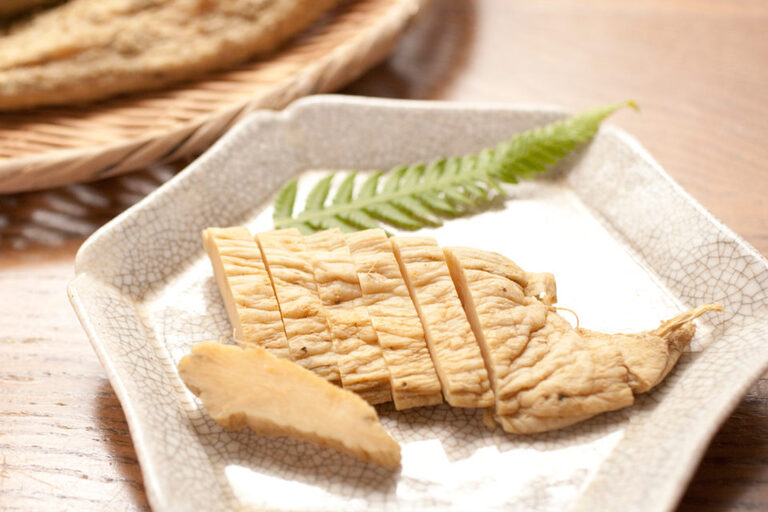
The nickname "Takuan-dera", derives from the famous monk Takuan Oshō, who is credited with popularizing takuan pickles. Takuan trained as a monk at Sukyoji. He was also a landscape gardener and it is to him that we owe Sukyoji's "Tsuru-Kame no Niwa" (Crane and Turtle Garden) and "Shinji no Ike" (Heart-Shaped Pond).
Sukyō-ji Temple: Guardian of Izushi
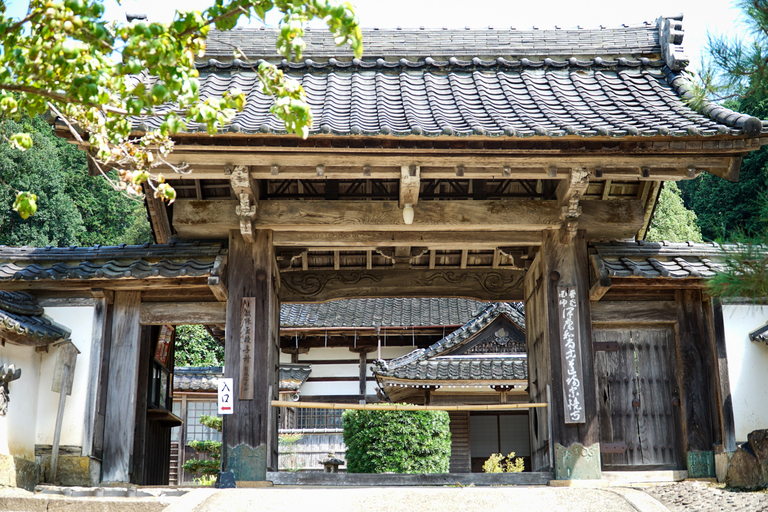
A 10-minute walk uphill from the iconic Shinkorō (Clock Tower) leads to the entrance of Sukyō-ji Temple. Established in 1392 as the family temple for the lords of Izushi, the temple was revitalized by Takuan Oshō after falling into disrepair during tumultuous times. It now stands as a respected temple in the community.
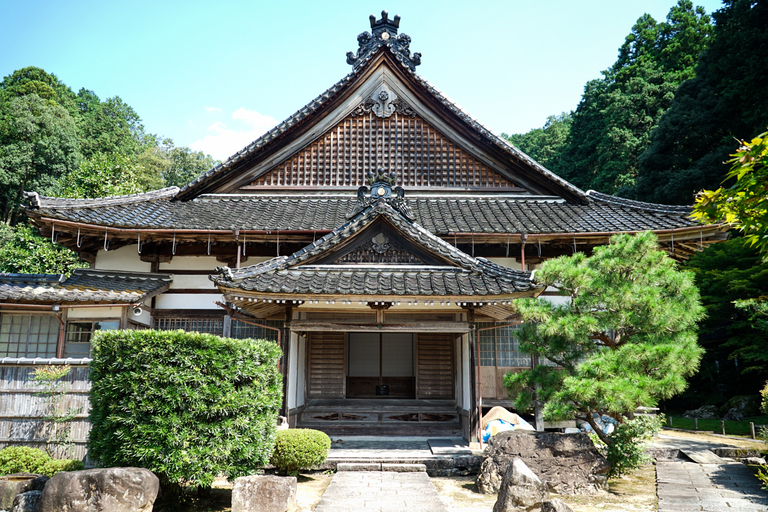
The temple is located to the northeast of Izushi Castle, protecting the town from the so-called "Kimon," or "demon gate," believed to bring misfortune.
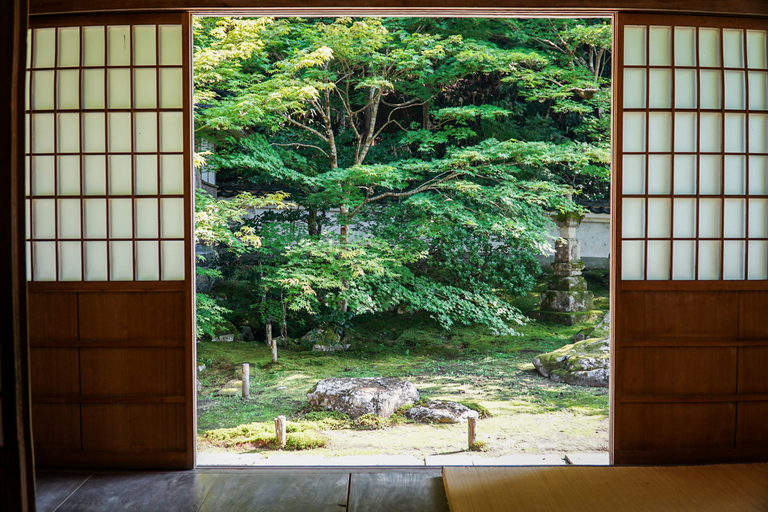
Passing through the mountain gate, you will find the main hall surrounded by lush greenery.
Experience Zazen
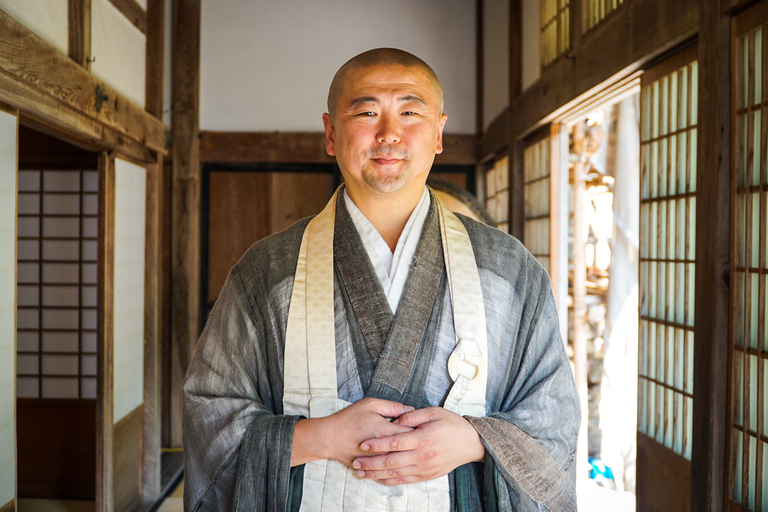
Zazen is about clearing the mind and confronting oneself. As priest Yūdō Kobara explains, "The goal of zazen is to objectively recognize distractions and the reasons holding you back, allowing you to take a new step forward."
The zazen experience lasts about 25 minutes, with two 10-minute sessions and a 5-minute break in between, totaling around 1.5 hours when including tea time and "Saiza," a meal time.
To prepare for sitting, light stretches are performed to relieve tension in the hips and legs. It feels refreshing to move in the garden while listening to the sounds of nature.
Aligning Body and Breath for Mental Stability
Kobara emphasizes that mental stability begins with the body. He provides detailed instructions on sitting posture.
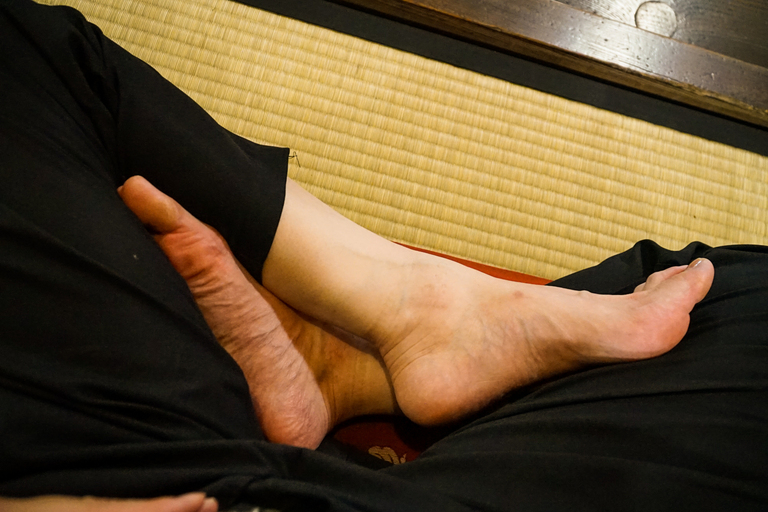
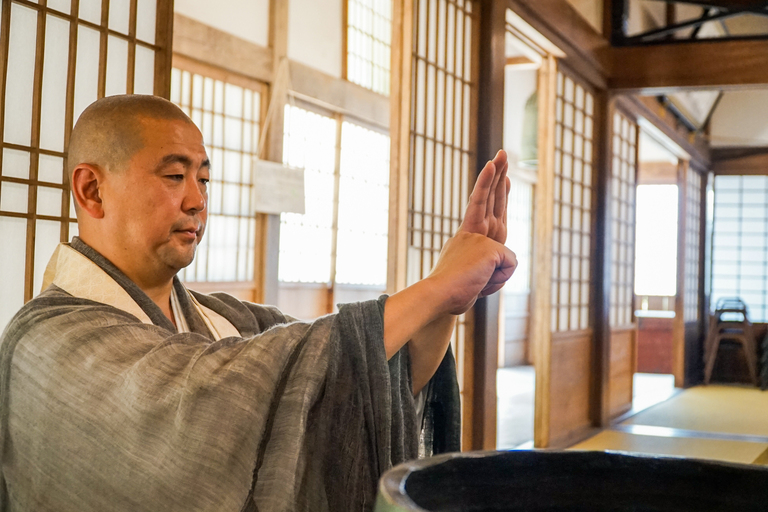
Start by sitting on a cushion, placing the right foot over the left thigh, then the left foot over the right thigh. If it's too uncomfortable, you can adopt a more relaxed position.
After settling in, lightly grasp the thumb of the right hand with the left hand and position it below the navel. Visualize being suspended from above while exhaling and lowering your center of gravity. Keep your chin tucked and gaze slightly downward, relaxing the shoulders while slowly breathing in and out.
The thick cushion provides a stable sitting position, allowing for comfort without the typical numbness associated with kneeling.
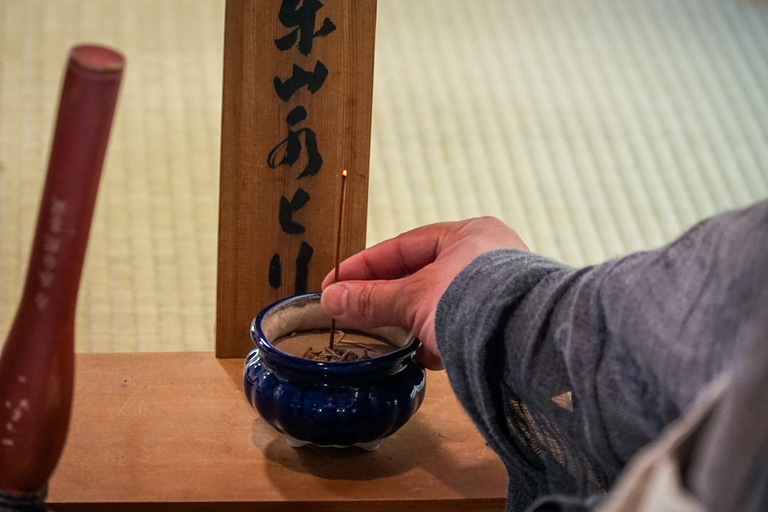
As the zazen session begins, focusing on the body makes one acutely aware of tension and posture. This mindfulness may remind one of yoga, highlighting how unaware we often are of our own bodies. After completing the first 10 minutes, a break allows for some movement.
After the break, the second 10 minutes felt easier, perhaps due to increased focus. Maintaining the same posture is challenging, but by concentrating on deep breathing and letting go of distracting thoughts, one can truly engage with the present moment.
Interestingly, the sounds of nature and the breeze through the hall become more vivid as attention sharpens.
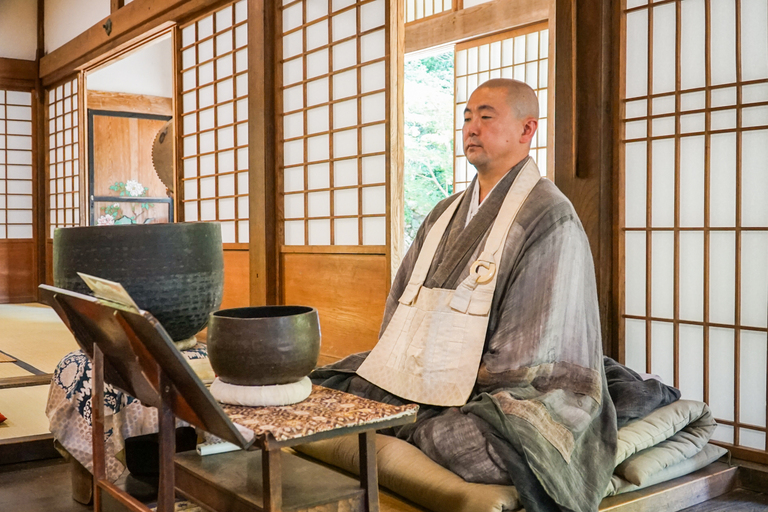
During the session, Kobara also shares insights on Buddhist perspectives and tips for focusing on the body, enhancing the experience.
After zazen, a refreshing sensation leaves one feeling light, akin to being gently returned from a film world to reality.
Enjoying Tea and Seasonal Sweets in the Beautiful Garden
After the zazen experience, seasonal sweets and tea are served.
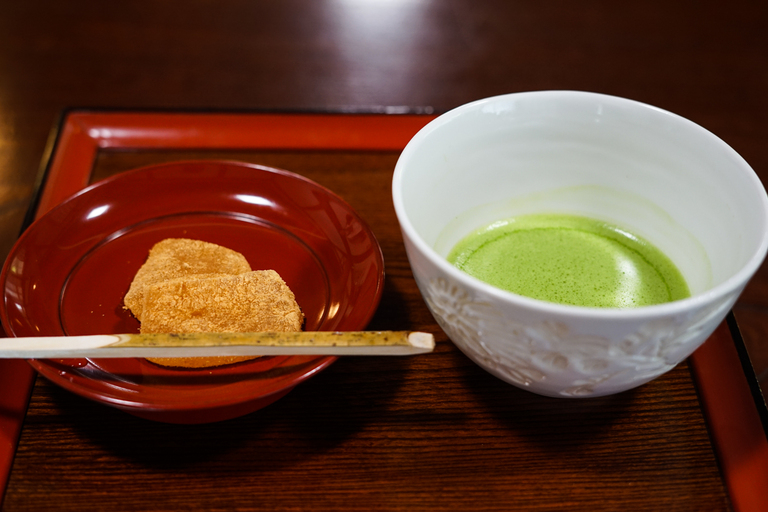
During my summer visit, the treat was homemade warabi mochi—delightfully chewy and refreshing, perfect for unwinding.
The matcha served was fragrant and complemented the sweetness of the warabi mochi splendidly.
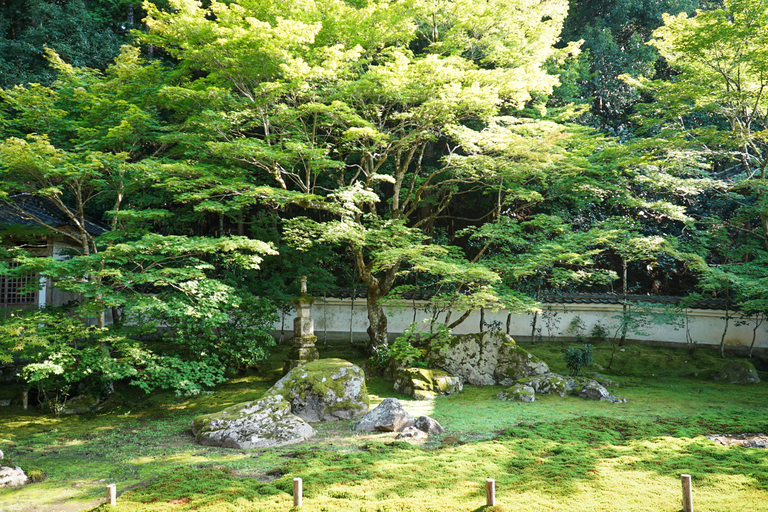
Following tea, visitors can stroll through Sukyō-ji’s gardens, featuring Takuan’s "Shinji no Niwa" and "Tsuru-Kame no Niwa," both magnificent in their design. Take your time to fully appreciate these beautiful landscapes.
Sutra Copying and Drawing Buddha Experiences Also Available
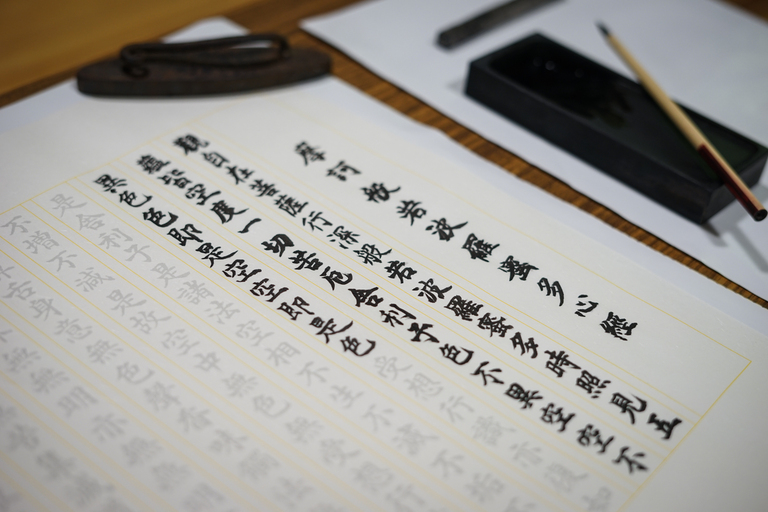
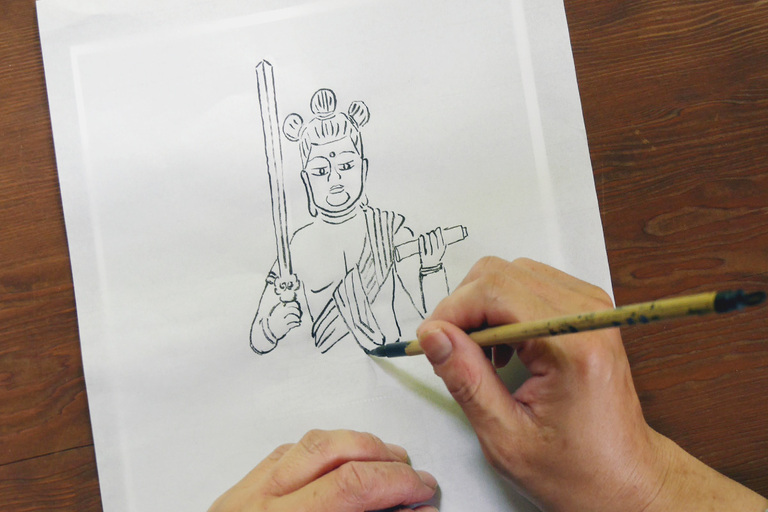
In addition to zazen, Sukyō-ji offers experiences in sutra copying and drawing Buddha images. Sutra copying involves meticulously writing out sacred texts to align the heart and mind with the Buddha. Drawing Buddha focuses on learning the posture of the deity through careful illustration.
While copying can reveal one’s habits and tendencies, it becomes enjoyable with practice, highlighting the joy of focused effort.
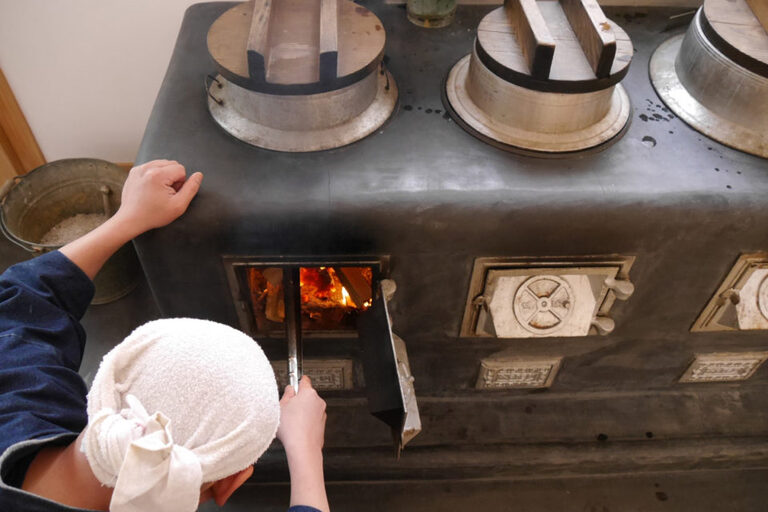
If time is limited, you can opt for just zazen and tea, or add a meal to your experience. Enjoy freshly cooked rice and homemade takuan.
Reservations and Dress Code
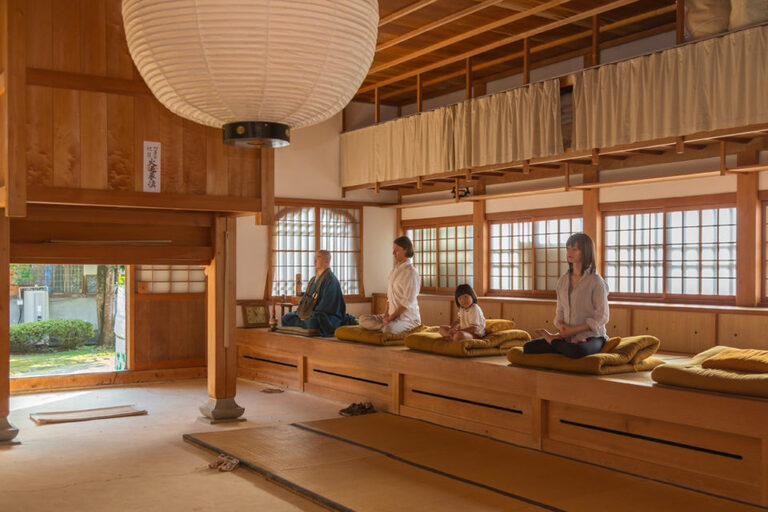
Reservations are required for zazen and sutra copying experiences at Sukyō-ji. You can make inquiries through their website, which offers English interpretation.
After your experience, you’re free to explore the temple at your leisure, allowing for a stress-free visit.
For comfort during prolonged sitting, loose-fitting clothing is recommended. As a sacred space, it’s best to avoid revealing attire. Having cash for donations or purchasing charms is also advisable.
Conclusion
Escape the hustle and bustle of daily life with a zen meditation experience. If you find yourself near Kinosaki Onsen or Izushi, consider spending a unique moment at Sukyō-ji Temple.
Sukyō-ji Temple Address: 33 Tōjō, Toyooka, Hyōgo (Google map) Opening Hours: General visits from 9:00 AM to 4:00 PM. Reservations required for zazen and sutra copying (phone: 0796-52-2333). Closed: Open year-round. Website: Sukyō-ji Temple
Date : 2024.10.28



